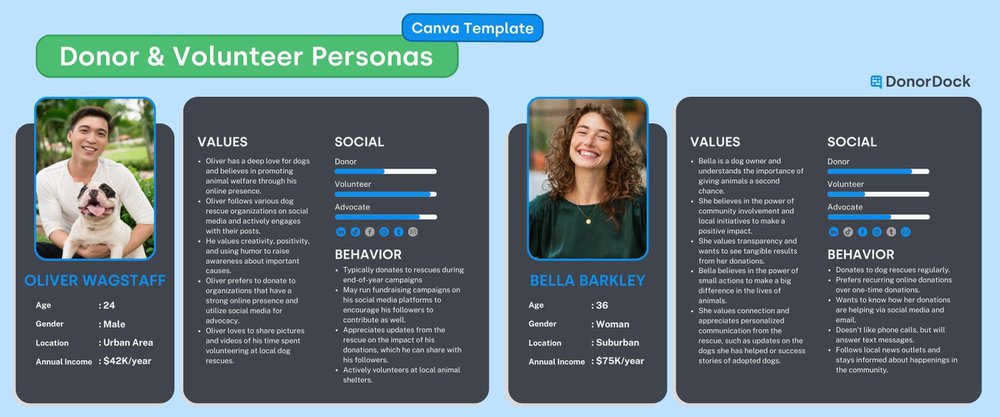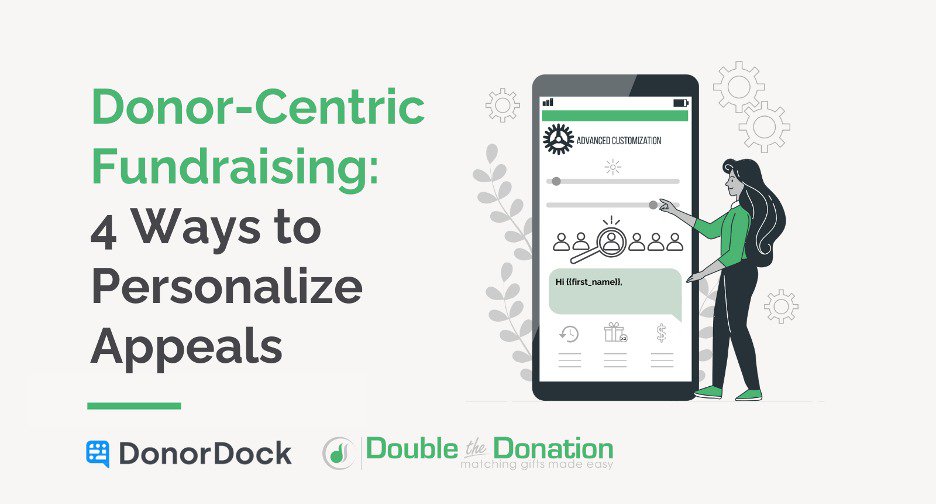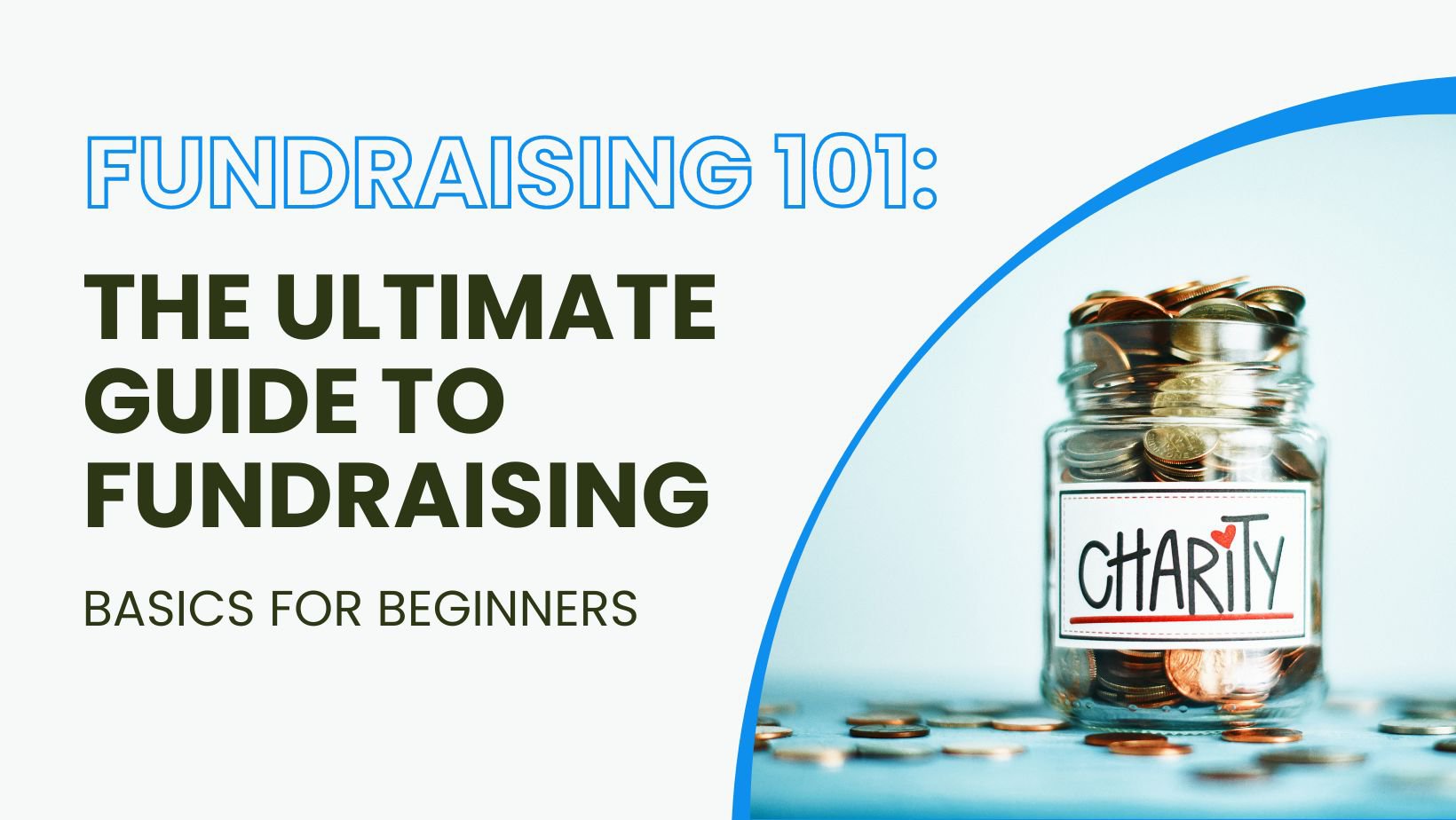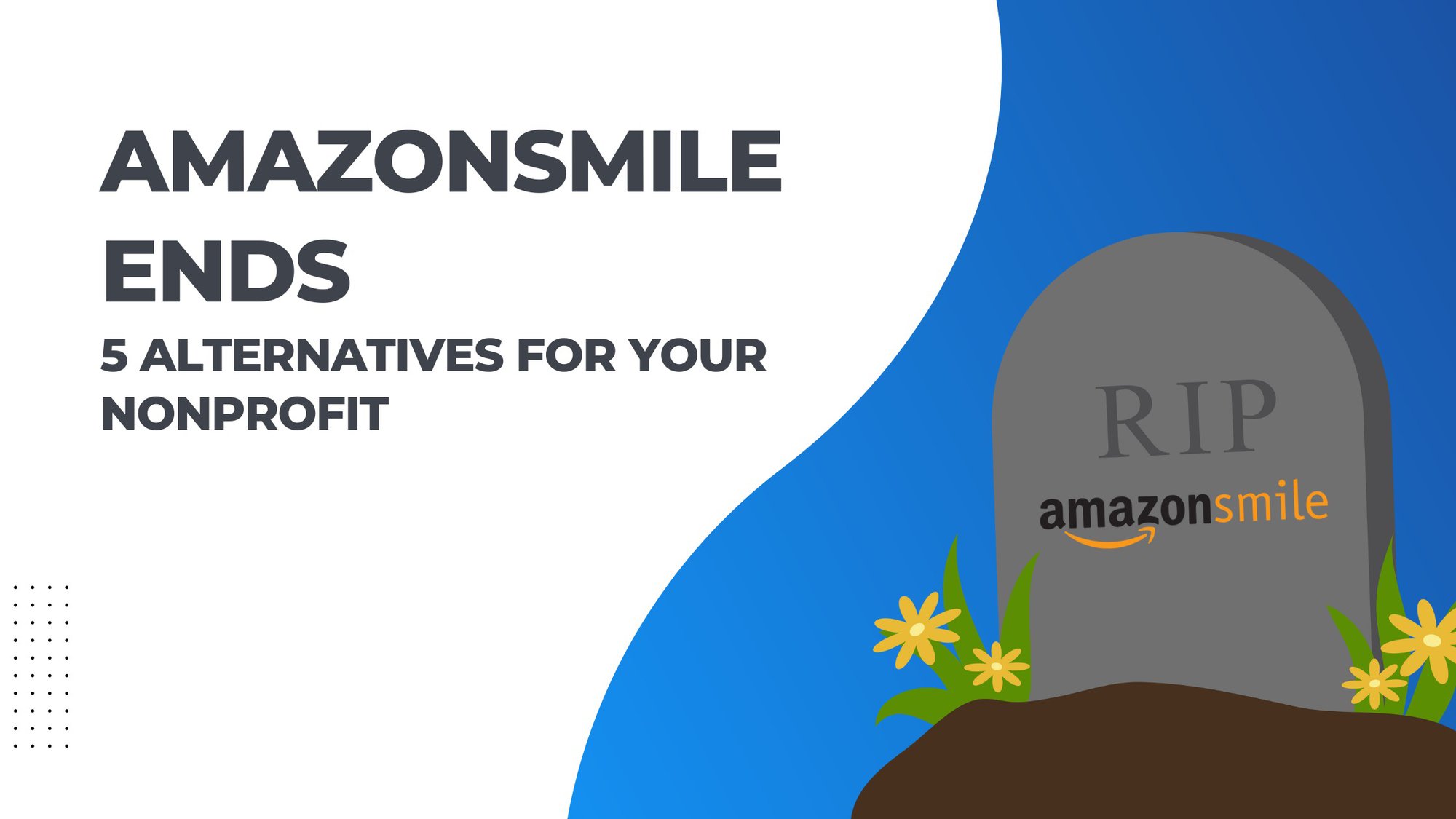When the stories of your nonprofit connect meaningfully with your donors, those donors engage more with the work you’re doing. An engaged donor, who has multiple touch points with your nonprofit, will build trust and a deeper relationship with your org. Because these touch points build trust, engaged donors have a higher rate of retention and continue to give even when life circumstances change. It might seem like simply sharing those stories should be enough, but are you sharing through the right channels?
Why marketing matters for your nonprofit
As a community builder in the nonprofit world, a focus on marketing often feels counterintuitive. We aren’t trying to sell a product or service. We’re trying to make a positive change in our communities! The stories of heartbreak that make your work necessary, and your stories of success feel like they should be enough. We see the need, so won’t our donors, too?
But when a nonprofit puts time into understanding marketing, they better understand the stories that hit with donors. And they know how to share those stories in a way that resonates.
Nonprofit marketing basics
Marketing is all about communication. Marketing aims to grow interest in a company's product or service. With marketing, the focus is on a broad approach to building brand recognition and communicating why the product or service is important and how it will solve a problem the customer already has.
Nonprofits have a similar need. A nonprofit needs to show donors why their service is important and how it already (or will) solves a need that the community has. Building brand recognition is about building trust with donors. When the community hears the name of that nonprofit, they know what the nonprofit is for, that the nonprofit is doing good work, and using funds appropriately.
Nonprofit marketing is all about the who, what, why, and where a nonprofit tells its story and the story of its community. Important questions to consider:
- Who is your nonprofit telling its story to?
- What is the story your nonprofit is telling?
- Why is that story important?
- Where will you tell the story?
When considering the what and why, it’s important to remember that the story isn’t just about you. The story shouldn’t be only about your nonprofit. It needs to be about the impact of your nonprofit and the community.
“If you are talking about yourself, it’s probably not the story. If you’re talking about the impact you’re making or the impact your community is making, that’s the story you should be telling.”
- Rob Burke CMO at DonorDock, from Ep.10 of Beyond the Donation
For resources on defining your what and why, check out our:
In this article, we’ll dive into the who and where of nonprofit storytelling. So, let’s get started!
Where will your nonprofit tell its story?
Where and how you tell your story has a big impact on how the message connects with your donors. Will you share a video on one communication channel? Or do you plan to write a letter on a different channel? It’s important to give thought to where your message is going out so that you connect with your donors.
What are communication channels?
Perhaps scrolling TikTok and Instagram is your favorite way to spend a free minute? Or maybe nothing brightens your day more than getting a letter in the mail or a phone call? You know how you like to connect with others, but do you know what your donors like? Different people prefer different communication channels based on their unique personalities, life stages, and interests. Understanding the ways your donors want to be communicated with is part of a good nonprofit marketing strategy.
While the ways to communicate are endless, these are the most common channels for nonprofits:
- Print mail
- Social media
- Phone calls
- Text messages
- Website
How to make communication channels work in your nonprofit marketing
Take time to learn about the different channels
Each channel has different rules that lead to success. For example: on Instagram users make posts, stories, and reels. Instagram stories tend to be quick, impromptu pictures or videos meant to capture that specific moment. Pictures of an event taken for Instagram Stories might include images of the event being set up, a video of someone reminding followers about the event, pictures or videos of the event in progress, and maybe a quick video at the end wrapping up the event.
But with a print or email newsletter, there are typically fewer images and more written words. Someone sending out a newsletter would want to be more intentional in their choice of pictures. Often images look more professional and staged. Instead of the pictures telling the story, the images are there to support the story being told with words.
Practice and take risks
Communication is an art, and it takes time to become skilled in the different channels available. Because it takes time to learn, it often feels intimidating to start. But it can also be fun and a great creative outlet! It’s okay to make mistakes and try something new. Even if it flops, it can be a good learning experience moving forward. Sometimes it’s easy to wait for perfection before getting started, but you don’t need to be perfect. You just need a willingness to try!
Prioritize
But as any nonprofit leader knows, there isn’t enough time in the day to get to everything! So how do you know which communication channels to prioritize? By creating donor personas!
What is a donor persona?
A donor persona is a fictional representation of your ideal donor. This is the person or people to whom your nonprofit aims its marketing. While it’s possible to make a donor persona from anecdotal evidence, the best donor personas are based on your donor data.
So while you might have a good idea of who is giving to your nonprofit, the true goal of donor personas is to give you a clear picture of your ideal donor. Your ideal donor is usually the person who is already giving consistently; although, you might also look into who you are hoping to attract as a donor.
Isn’t everyone my ideal donor?
As a nonprofit, it’s hard to think about narrowing your marketing to a specific group. Shouldn’t we be trying to reach everyone? How can we grow if we target our marketing to one persona? The truth is: no nonprofit is going to appeal to everyone. A person terrified of dogs just isn’t going to give to a dog rescue. And it’s a waste of time and energy to try to get them to. Your time is better spent sharing your stories of impact with the people who will connect with them.
And the donors who care about your mission probably hang out with like-minded people, who will also care about your mission. When you focus your marketing on your ideal donor, then your nonprofit will continue to connect with donors who are excited about your mission.
Data-driven personas as a best practice
Because donor personas give valuable insights into the preferences and behaviors of different parts of a donor pool, nonprofits are able to tailor their communication to have the biggest impact. So it is important to use the data you have to build accurate personas.
Take a look at these two personas for example. A dog rescue might have a typical volunteer and a typical donor that look different from each other. It’s important for that nonprofit to change its marketing style to meet the needs of each group.

Check out this free editable copy of our donor persona template, and start building your own nonprofit donor personas!
While both Oliver and Bella value animals and want to see dogs find good homes and be cared for, they still have unique motivations, ways of donating, and preferred methods of communication. While Bella would likely appreciate an email with updates tailored to her donations, Oliver would like a post shared on TikTok or Instagram. He’s more likely to engage with a volunteer sign-up shared via social media than one that’s emailed. And, he’d be more willing to share posts with his followers.
When a nonprofit uses this information in its marketing and communication strategies, they are able to reach their contacts in an effective way.
Now, let's dig into the process of choosing the right communication channels based on your donor persona(s):
How donor personas help with nonprofit marketing
Analyze your data
By tracking how donors are currently giving, nonprofits better understand what motivates donors to give. An uptick in donations every time a specific issue is mentioned is a good indicator that donors care about it. By tagging and segmenting donors, a nonprofit can market its messaging to reach the right donors.
Actionable step to improve your nonprofit marketing: Start by looking at the donor data you’ve already collected. If you haven’t started yet, find a platform that lets your giving pages integrate with a donor management CRM, so this process is simplified and not another task on your plate. Important data to consider: demographics, interests, and communication preferences. See if you can spot any patterns and trends that can guide you in selecting the appropriate channels.
Understand why your donors give
Put yourself in your donor's shoes and try to understand what specifically draws them to your nonprofit. Do you typically see an increase in donor engagement or giving around certain events? Or have you noticed less traction around a campaign that you thought would be more successful? Maybe more volunteers show up for certain activities than others? Or do you see them posting more while doing certain activities or different campaigns?
Actionable step to improve your nonprofit marketing: Take time to see what specific campaigns, funds, and appeal methods your donors engage with most. When you next reach out to your donors, you could also include a short survey asking what motivates their giving.
Consider the age group:
Younger donors might be more active on social media platforms like Instagram or Snapchat, while older customers might prefer emails or phone calls. Keep the generational divide in mind when selecting the communication channels for your nonprofit.
Evaluate the work your nonprofit is doing:
The work a nonprofit is doing should impact the marketing strategy it follows. If a nonprofit works with adorable puppies, then posting short videos or lots of pictures on social media make a lot of sense. Because it’s on social media, the videos don’t need to be super high quality. They just need to show those cute puppies.
On the other hand, Creative Care for Reaching Independence has a fundraiser to build a house for a person or people with very specific needs. More details are needed than a short clip could include. In their case, a longer video makes sense. While it is also shared on social media, it is of higher quality so it can be used during their Tablescapes event.
“But the day and age that we live in now with TikTok and Instagram Reels, you can have a really powerful story and you don't have to have a high, high production for it to make a huge impact on your community. Make sure that you align your quality with your channels.”
- Rob Burke CMO at DonorDock, from Ep.10 of Beyond the Donation
Actionable step to improve your nonprofit marketing: Decide if your work is best shared with writing, pictures, or video. It’s likely a mix, but which makes the most sense?
Actionable step to improve your nonprofit marketing: Choose the best medium to share your story based on the type of work you are doing.
Be adaptable:
Don't be afraid to experiment and measure the response. It’s okay to try something out and find out it isn’t the right fit. Customer preferences change over time. Marketing changes all the time, so your nonprofit will need to stay up to date with trends. Embrace new channels if they align with your customer personas. And remember, communicating with your donors doesn’t always have to be serious. You can try something silly, unique or outside of your comfort zone. Have fun with it!
Conclusion
Marketing is an important part of your nonprofit connecting with donors. By creating donor personas, you will be able to choose the best channels of communication to connect with your donors. Donor personas help you have a clear picture of your ideal donor and work best when they are made from real data.
Actionable steps to take today:
- Look at the donor data you’ve already collected
- Pay attention to what specific appeals, funds, and campaigns have the highest return
- Consider the age of your donors
- Choose the best medium to share your story based on the type of work you are doing
- Take risks and be adaptable, have some fun with it!
- Utilize a Donor Management System to understand the donor information you have
You’re doing good work in your corner of the world. And when you share your message with donors who are passionate about your mission, you can build trust and a lasting relationship that continues to change your community!














